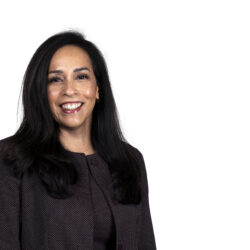Diverse investors require a tailored approach

The most recent 2020 census highlighted what we’ve long known — the United States is becoming more diverse. From 2010 to 2019, the white population percentage in the U.S. declined to 60.1%. The Latino/Hispanic and Asian American population percentages, on the other hand, both increased, now sitting at 18.5% and 5.9%, respectively.

We are beginning to recognize trends in the way demographics such as race, gender spectrum, ethnicity and LGBT identity influence everything from education and lifetime earnings to housing, health outcomes and access to services. While an essential part of the conversation, diversity is not just about representation; these differences could translate to a wide range of attitudes about wealth, approaches to financial challenges and investment risk tolerance. Making financial services inclusive through better education and tailored services will help ensure that the future of wealth is more equitable overall.
The financial professional’s challenge is gathering the information and insight needed to understand their client’s individual needs and offer solutions that best suit that client. It is a process that requires time and patience but identifying those needs and how to address them may drastically affect an investor’s life outcome.
Retirement planning plays a crucial role in a person’s financial future, yet research shows significant disparities in retirement account ownership. According to data from the most recent Survey of Income and Program Participation, while white investors have an ownership rate of 53.6%, Black investors have a rate of 36.8% and Hispanic investors have a participation rate of only 28.3%. Understanding the benefits of retirement planning, and getting started on that track early, makes a massive difference in the ability to finance retirement. To encourage people to focus on preparation, financial professionals and the industry must address concerns about the process, which may take many different shapes, and provide clear information about how to attain individual goals.
Diverse investors and multigenerational households
According to Pew Research, Asian, Hispanic and Black Americans are more than twice as likely as white individuals to live in a multigenerational household, illustrating a difference in the practical definition of family. The possibilities are endless for what that means for an individual's finances. For primary income earners, it could mean a combination of lower net earnings and more household dependents, such as parents or grandchildren. On the flip side, it could mean lower housing expenses for a younger worker living with parents or grandparents. For the elderly or disabled, this could allow them to age in place and reduce concerns over the potential need to downsize.
Living situations could necessitate a unique financial plan that cannot be determined objectively by the living situation alone. Determining priorities and motivations behind a person’s lifestyle is important work that may allow a financial professional to provide the best advice.
One of the ways CUNA Mutual Group has specifically taken notice of trends among diverse investors and used the information to serve our customers better is by observing a pattern that Black customers were more likely to add multiple beneficiaries for investments. In the past, we provided enough room for only two beneficiaries. While our retirement options actually allowed a significant number of beneficiaries, the infrastructure made that process confusing and not intuitive, leading to an influx of customer service questions. To meet that need, we increased the number of spots available to name beneficiaries. It was a simple change on the administrative side but one that broadened the inclusivity of our approach toward diverse investors.
Without careful observation and analysis of how to address inequities, these situations slip under the radar and create hurdles for clients seeking advice. For some, these barriers may be a sufficient deterrent to prevent them from reaping the benefits of investing and retirement planning. Finding the hurdles and seeking to address them is a necessary part of achieving parity in financial services and ensuring that everyone may access a bright financial future.
Diversity matters across the board, but customized approaches for customers are essential to providing equal access. Improvements in representation in the financial services industry and the resources and education available to all consumers will help identify barriers to success. Addressing those spaces of differentiation and room for improvement is the first step in making budgeting, financial planning and retirement preparation more equitable.
Gina Riepel is vice president of strategic partnerships at CUNA Mutual Group. She may be contacted at [email protected].
© Entire contents copyright 2023 by InsuranceNewsNet.com Inc. All rights reserved. No part of this article may be reprinted without the expressed written consent from InsuranceNewsNet.com.





‘Annuity King’ Phillip Roy Wasserman found guilty of $6.3M fraud
Abortion access, False Claims Act among current health litigation
Advisor News
- Retirement optimism climbs, but emotion-driven investing threatens growth
- US economy to ride tax cut tailwind but faces risks
- Investor use of online brokerage accounts, new investment techniques rises
- How 831(b) plans can protect your practice from unexpected, uninsured costs
- Does a $1M make you rich? Many millionaires today don’t think so
More Advisor NewsAnnuity News
- Judge denies new trial for Jeffrey Cutter on Advisors Act violation
- Great-West Life & Annuity Insurance Company Trademark Application for “EMPOWER BENEFIT CONSULTING SERVICES” Filed: Great-West Life & Annuity Insurance Company
- 2025 Top 5 Annuity Stories: Lawsuits, layoffs and Brighthouse sale rumors
- An Application for the Trademark “DYNAMIC RETIREMENT MANAGER” Has Been Filed by Great-West Life & Annuity Insurance Company: Great-West Life & Annuity Insurance Company
- Product understanding will drive the future of insurance
More Annuity NewsHealth/Employee Benefits News
Property and Casualty News
- Too little, too late, too weak: Critics react to proposed insurance legislation
- Q&A on revised FEMA flood insurance maps
- Commercial auto insurance eligibility for nonbusiness owners: A 50-state overview
- How Selma Residents Are Safeguarding Wealth with Precious Metals Amid Economic Recovery
- W. R. Berkley Corporation Names Erin Rotz President of Berkley Fire & Marine
More Property and Casualty News